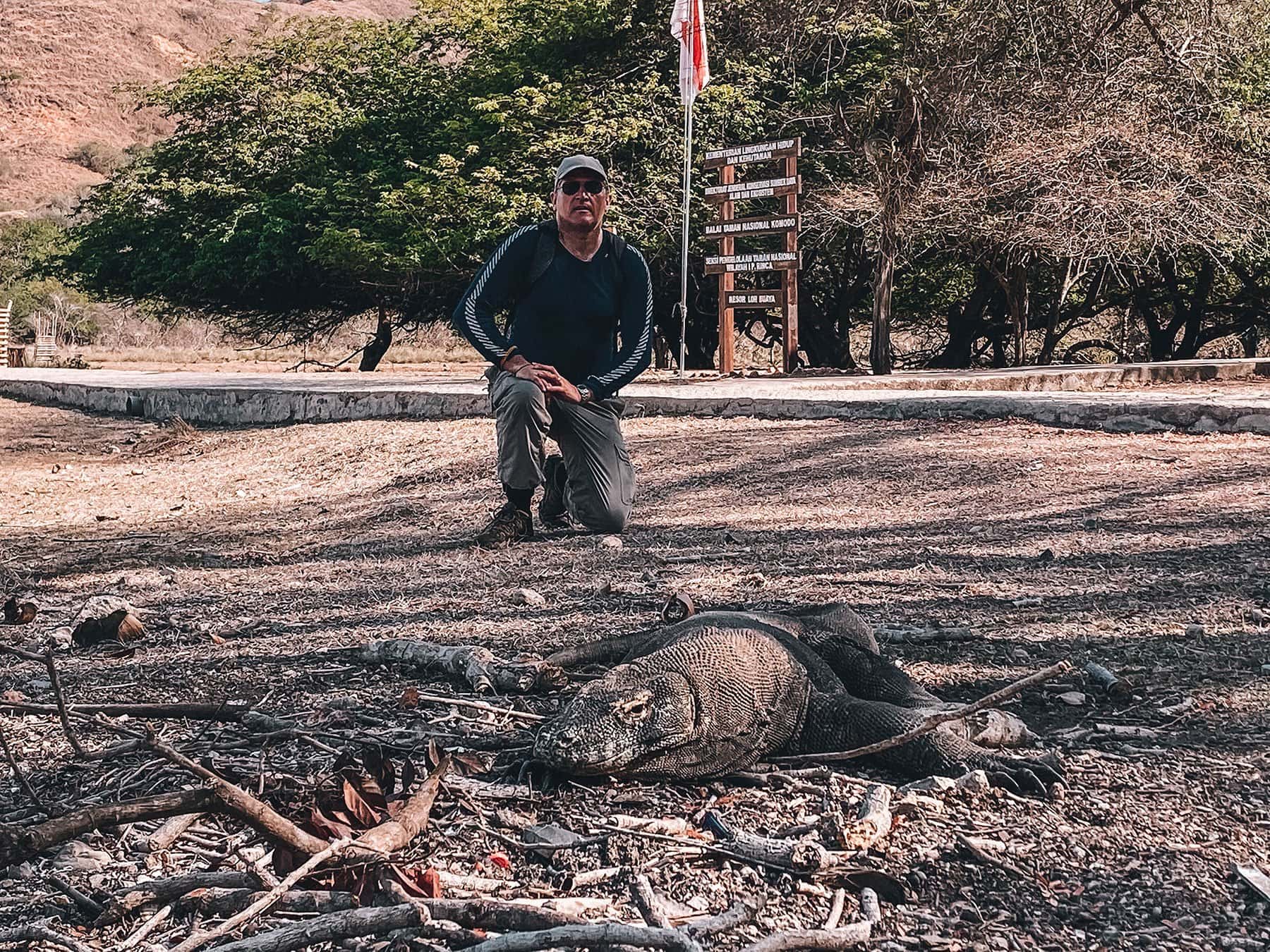
About the author:
This article was written exclusively for Experience Travel Group (ETG) by acclaimed travel writer Robin Mckelvie. Having taken over 500 trips to over 100 countries, writing for The Telegraph, Wanderlust, The Scotsman and many more, Robin still counts ETG as his go-to for all things Asia. Find out what happened on his recent Komdo dragon experience…
I’m close enough to peer into the oil black pools that are the eyes of the world’s largest lizard. Close enough to hear him breathe and the sear of his serrated teeth crunching hard into the bones of the deer he’s devouring. Then he pauses and stares straight at me. I’ve caught this ancient killer’s attention. He hauls himself off the carcass and takes a step towards me. Then another. Instantly the ranger sweeps round to head him off, using no more than a long, thin pole. Welcome to the Komodo National Park, home to one of the most thrilling wildlife experiences on the planet.
I can remember as a child learning that dragons really do exist and being utterly fascinated. The first time I came to Indonesia 20 years ago I’d finally come across the komodo dragon, but in the disappointing, depressing setting of a zoo. Venture to the Komodo National Park and a totally different experience, a deeply immersive one, emerges in one of the most spectacular corners of the planet as I learned when I flew into the recently expanded airport at Labuan Bajo on the isle of Flores. It’s the gateway to the UNESCO World Heritage listed national park.
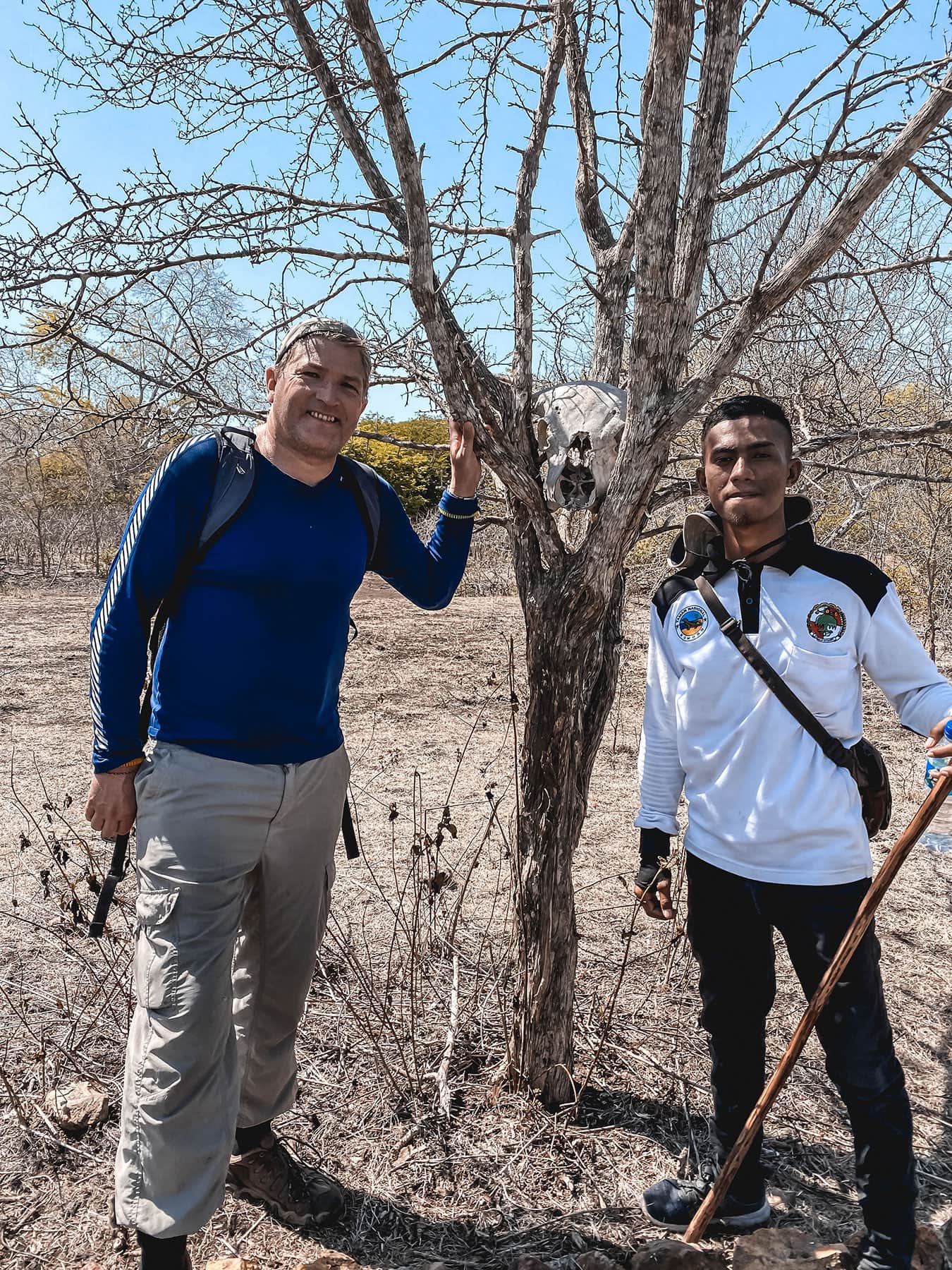
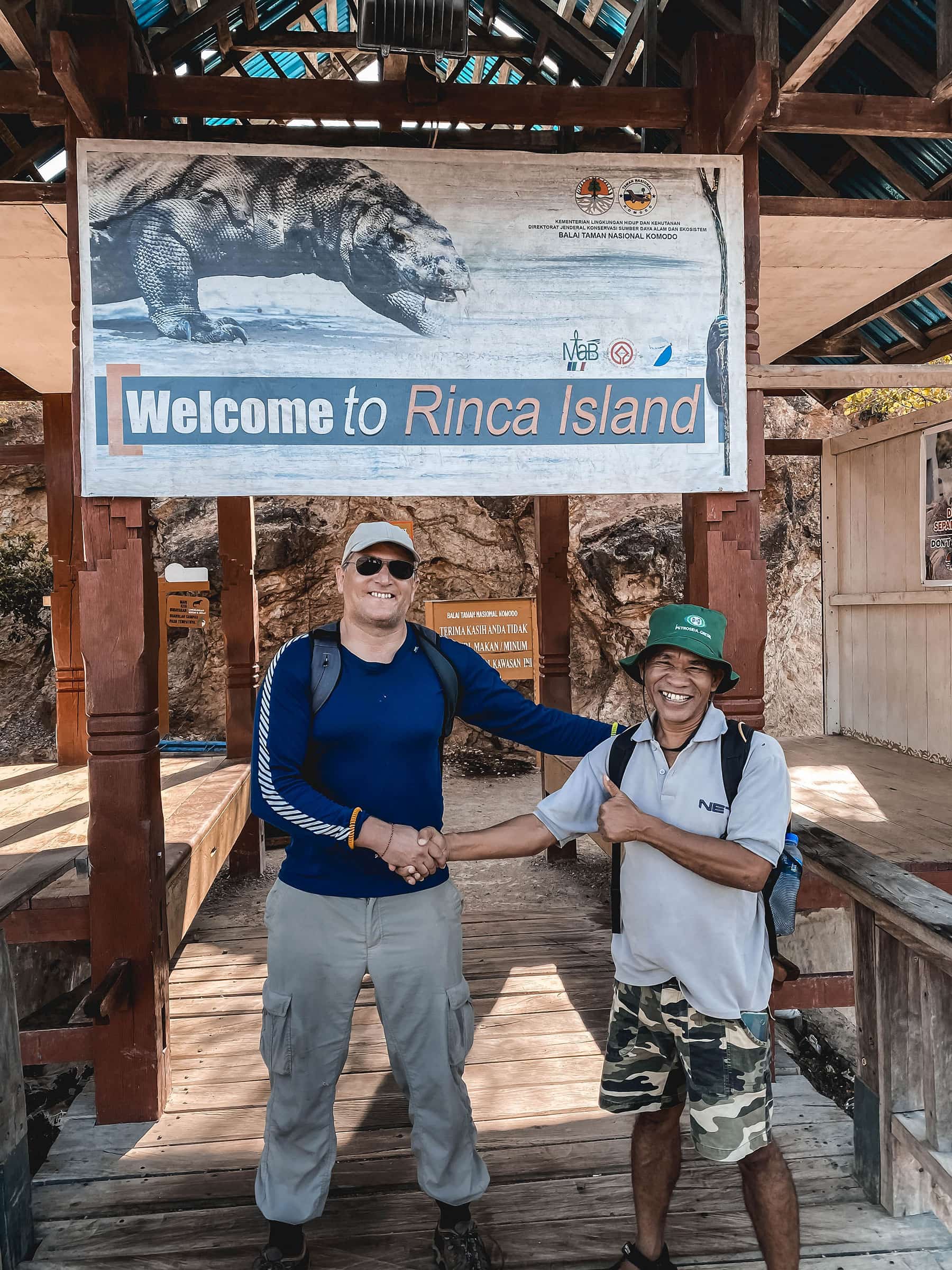
Why see the Komodo dragon now
There was no doubting where I was as soon as I touched down. Hulking images of the dragons guard over the runway from the terminal building, surveying new arrivals. The revamped airport is part of a rise in tourism that has stirred up conservation issues, with talk even in recent years of a partial ban on visiting some parts of the park. I was assured by Experience Travel that the park was very much open. For now. This may change in the future so if you want to experience the dragons in their natural environment I’d suggest you come sooner rather than later with local rumours of a massive hike in park fees or a ban.
It’s not individual travellers and small groups like the ones Experience Travel specialise in that is the issue, but the cruise ships and mass market groups that the park is attracting. They bring volume, concerted volume at peak times that the national park just cannot easily handle.
My base was on the neighbouring isle of Flores, handily just a short drive from the airport, with its own jetty for boat trips exploring the national park. Labuan Bajo is getting more hectic year on year, but the Plataran Komodo Beach Resort proved an ideal oasis set on its own beach with a reef just offshore for snorkelling. The staff are largely local as well with superb Indonesian cooking with a touch of fusion flare – Experience Travel have chosen their local hotel here well.
After one of those burning ochre sunsets that are standard in this remarkable part of the world it was time the next morning to hop on a speedboat bound for the land of the dragons. You do get komodos in patches on Flores, but you really need to go to ether the isles of Komodo or Rinca in the Komodo National Park to be sure of seeing them.
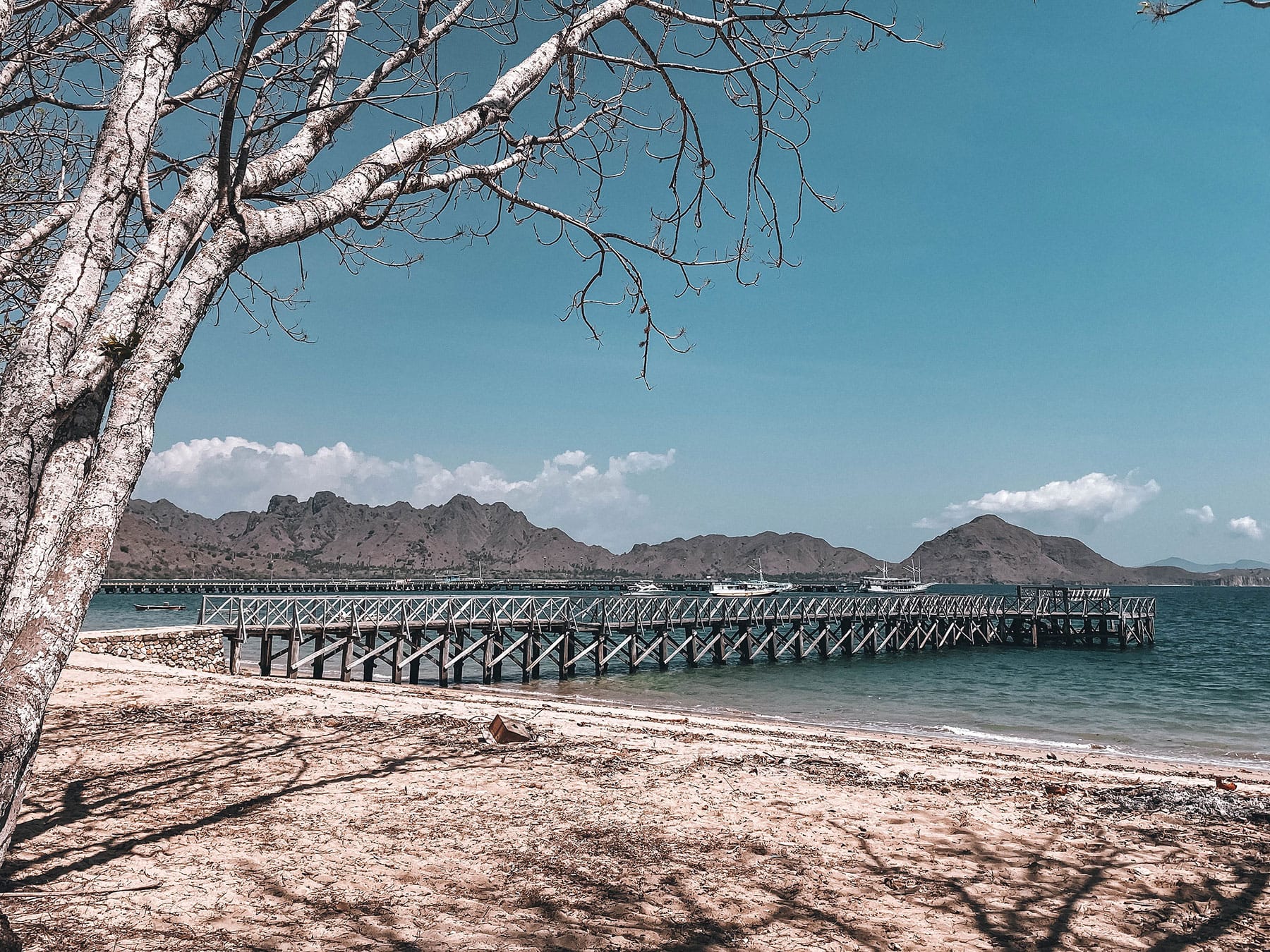
When to go to Komodo
Most visitors are desperate to ‘tick off’ the island of Komodo as fast as possible, but I heeded my guide Adie’s advice. He reckoned Rinca would be quieter when we arrived early, with a good chance the dragons would be active. He was right. We eased into the jetty and stepped ashore. We were now firmly in komodo dragon territory – this means keeping your wits about you at all times.
Every visitor has to be accompanied by a ranger. The system works well as they are a font of knowledge on the park and the dragons, as well as looking after your safety. They also make sure you don’t interfere with the dragons in any way. My young ranger was a native of Komodo. After the usual beaming Indonesian welcome he grabbed the stout stick with a forked end – all that was to protect us against this ultimate predator – and we headed inland in search of the komodo dragon. We didn’t have to wait long. The ranger camp serves as a magnet for komodos. I spotted my first one seconds after arriving.
At first he looked squat and small, almost lifeless. Then with a flick of his tail he was up and lumbering across the dusty terrain, a totally different creature. Within minutes there were over half a dozen komodo dragons at close quarters. The rangers are experts at spiriting you around to get great photos, but it’s still a heart pumping feeling when you’re retreating from one dragon and eye another one emerging behind you.
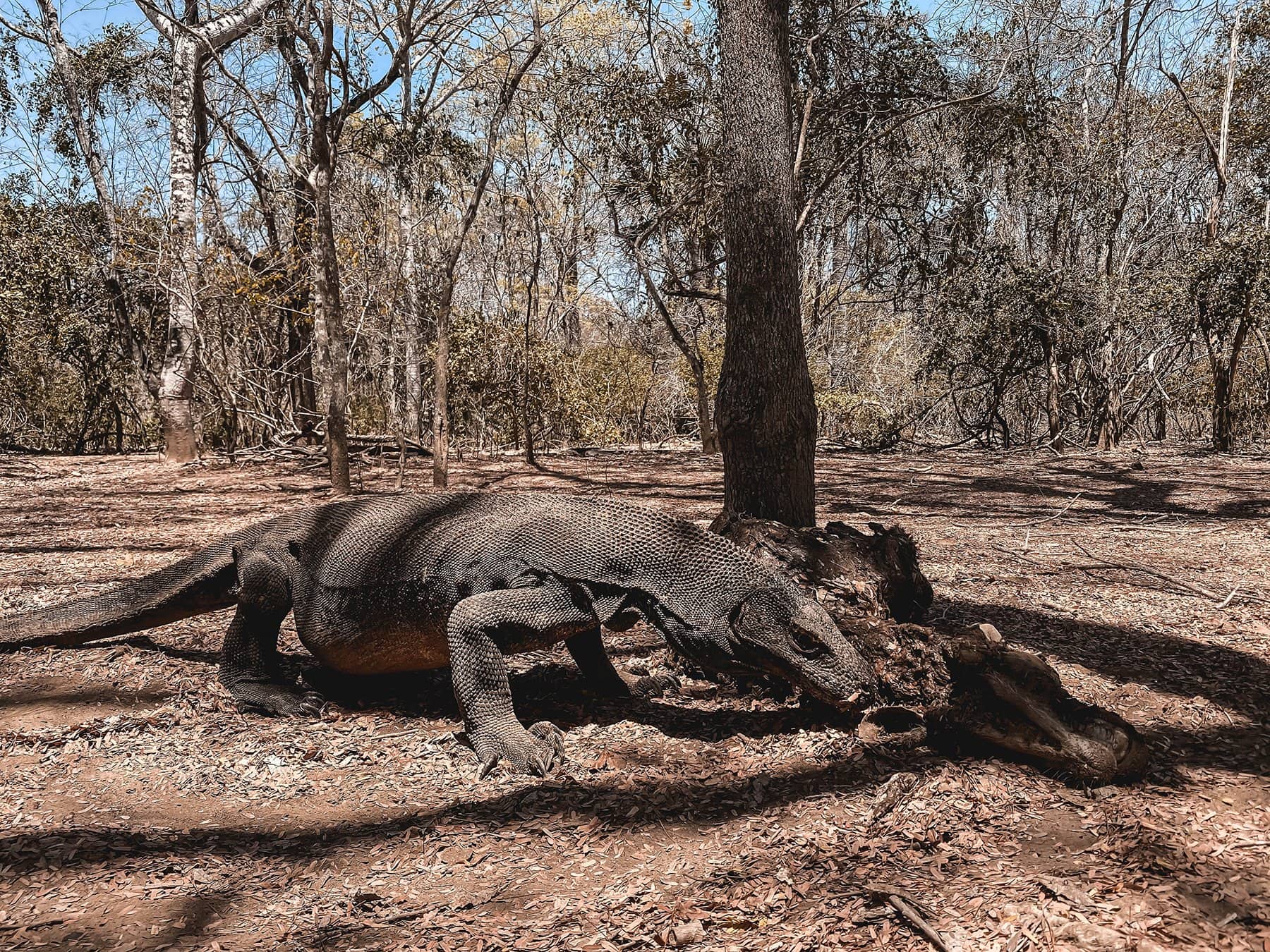
Remember: this is the Komodo dragon’s territory…
The threat of the komodo dragon is all too real. What many visitors don’t realise is that it’s not the risk of being devoured whole by a komodo that’s the issue. It’s how they kill. They’ve evolved to deliver a venomous bite that is alive with all manner of toxic bacteria. These shock and then poison the victim, putting komodos well at the top of the food chain in these islands. Adie explained “They just bite a deer once and then wait. And wait. And they then always have it”. This sent a chill down my spine and reinforced the fact that this experience is no tourism confection. You are very much in the world of the real life dragons here.
You can just visit one of the islands, but I strongly recommend venturing to both Komodo and Rinca. Komodo is the more famous isle, but here I had to work harder to see the komodos. None were hulking around the camp so my new ranger and I headed deep into the arid scrub. If you’re expecting lush jungle on these isles you’re in for a surprise as the parts you can explore are more savannah like, reminding me more of Africa than South East Asia.
My ranger again emphasised the genuine nature of each experience. “No two days are the same”, he insisted. “Sometimes you have to walk for a long time just to see one komodo and then another day they are everywhere. No one can predict them”. He was proved dramatically right. What happened next seemed to surprise him as much as it did me. We rounded a bend and caught the surreal sight of a deer’s carcass seemingly moving by itself around a tree.
Venturing a few steps further on we found a large male komodo dragon jealously guarding his lunch. At first we retreated, but then when he realised we weren’t competition he let us photograph him from close distance. Showing komodos have brain as well as braun he used the trees to dislodge sections of deer, which he then mashed with those teeth. Pointing to a jagged shape in his throat my ranger explained that the komodos can even bite through and then digest bone.
I felt privileged to spend time in the world of this perfect predator. It felt like being at the heart of a wildlife documentary. I half expected to hear the dulcet tones of David Attenborough emerge to soothe over the scene. I snatched dozens of photos and made videos. My guide was shooting with his own phone too, a sign of it being a special experience. After a day with the komodos I have to admit I may have started to get a little complacent. None had really showed much of an interest in us and neither of my guides had needed to use their poles. That was about to change.
Dropping the scrappy sinews of the remaining deer the giant lizard stared straight at me. I froze. Then he hauled himself off the dirt and unmistakeably started to head right in my direction. As I made a swift retreat my guide swooped in with his pole to steer the gargantuan lizard away from us. It was a stark, powerful reminder that the komodo dragons are wild animals and that this remarkable corner of the planet is very much the land of the dragons.
CURIOUS ABOUT KOMODO?
Take a look at our Komodo holiday ideas for inspiration.
Want to find out more about Indonesia’s 17,000 other islands?
Alternatively, for tailored holiday advice, give us a call on 0203 993 4641 .

We don’t believe in standing still. Watching the world go by through a window. Hearing it through the stories of others.
You want to be in it, out there. Asking questions and finding answers. Finding yourself in worlds unknown. Finding the path less trodden. Meeting people with a different story to tell.
Just ask why, what, how, who? We’ll never stop helping you find the answers.
Our travellers come home with stories to tell, memories to keep and new ways of seeing their lives around them. That’s what happens when you truly connect with a destination.
FREE YOUR CURIOUS SIDE WITH EXPERIENCE TRAVEL GROUP


FREE YOUR CURIOUS SIDE WITH EXPERIENCE TRAVEL GROUP


